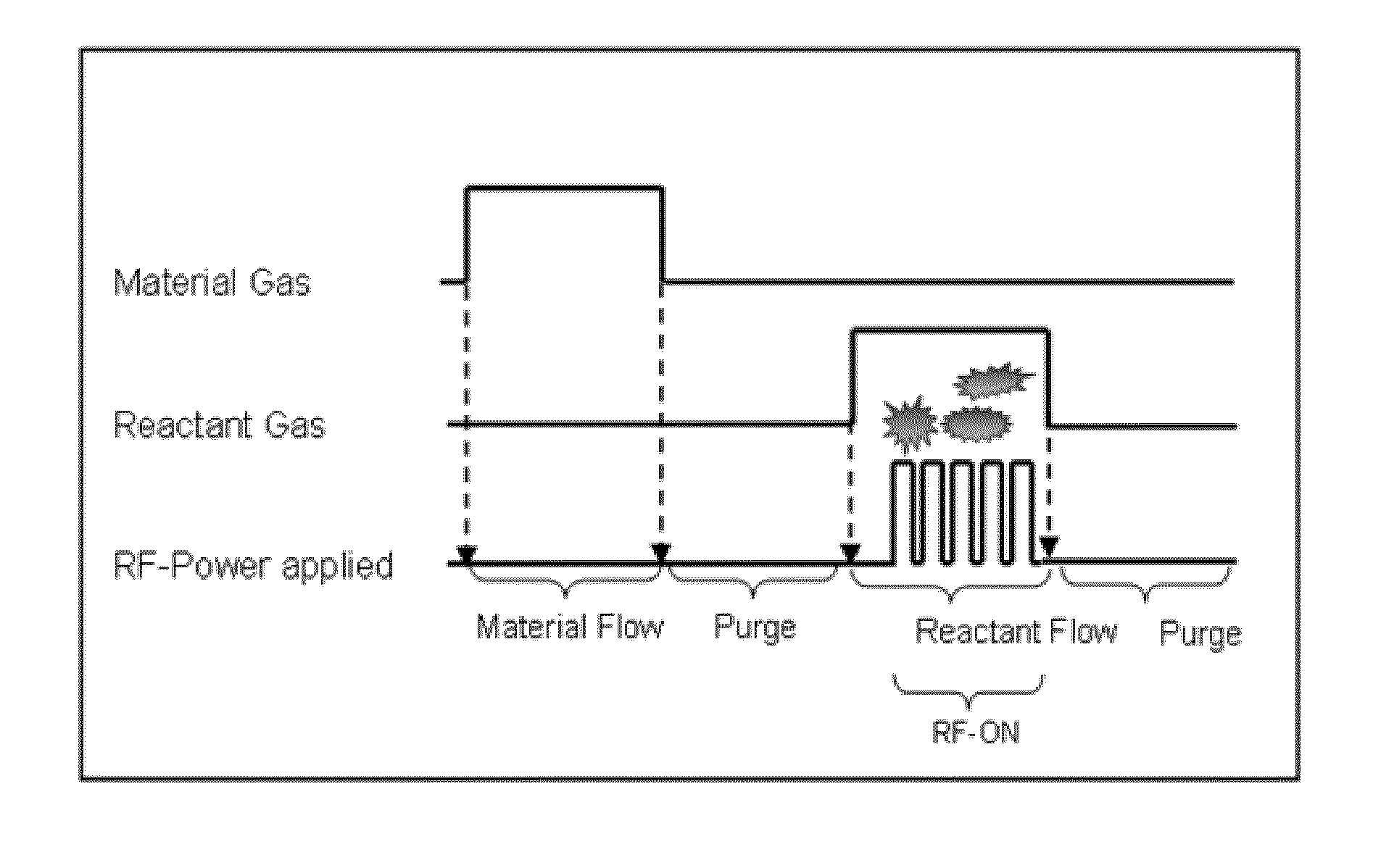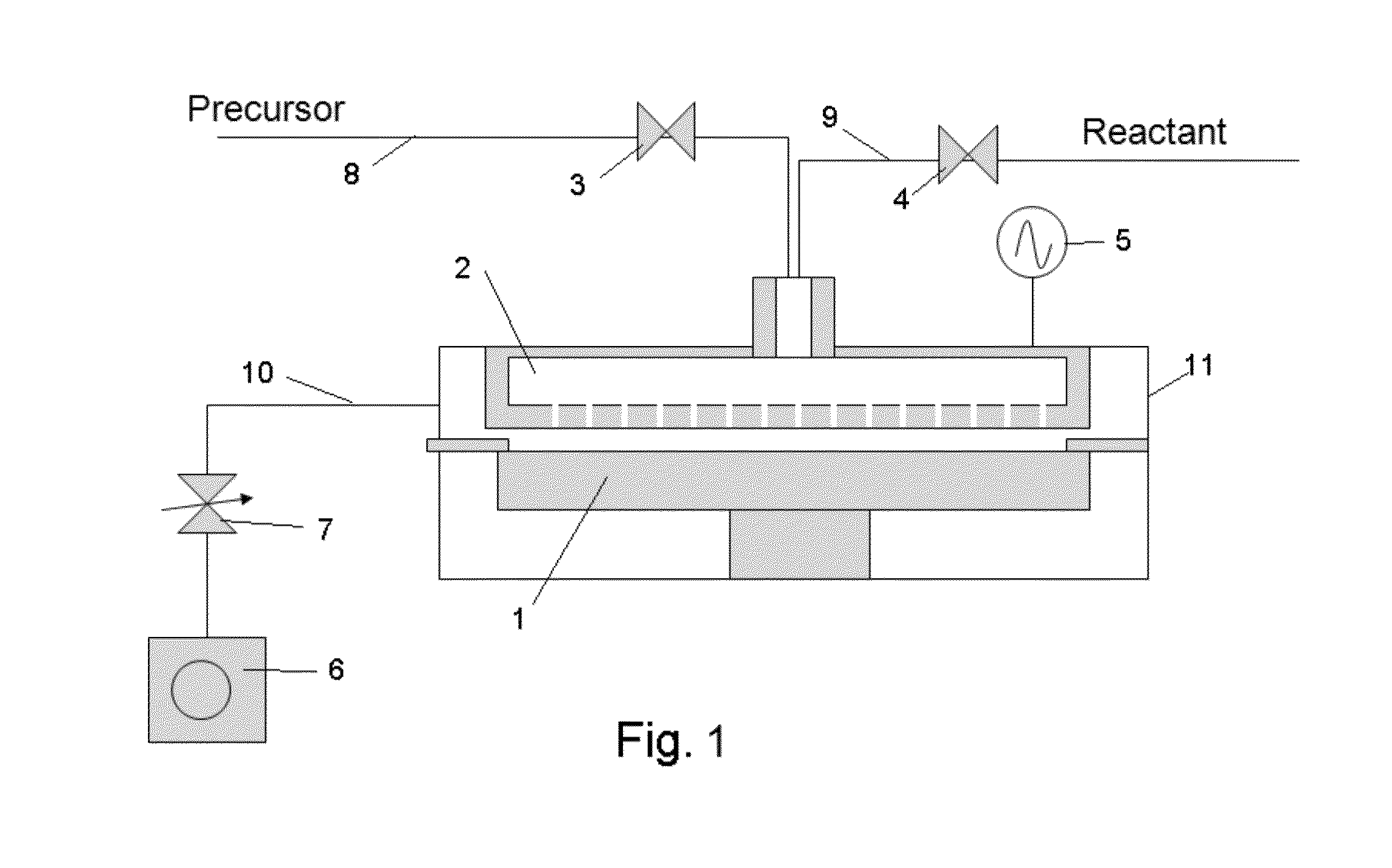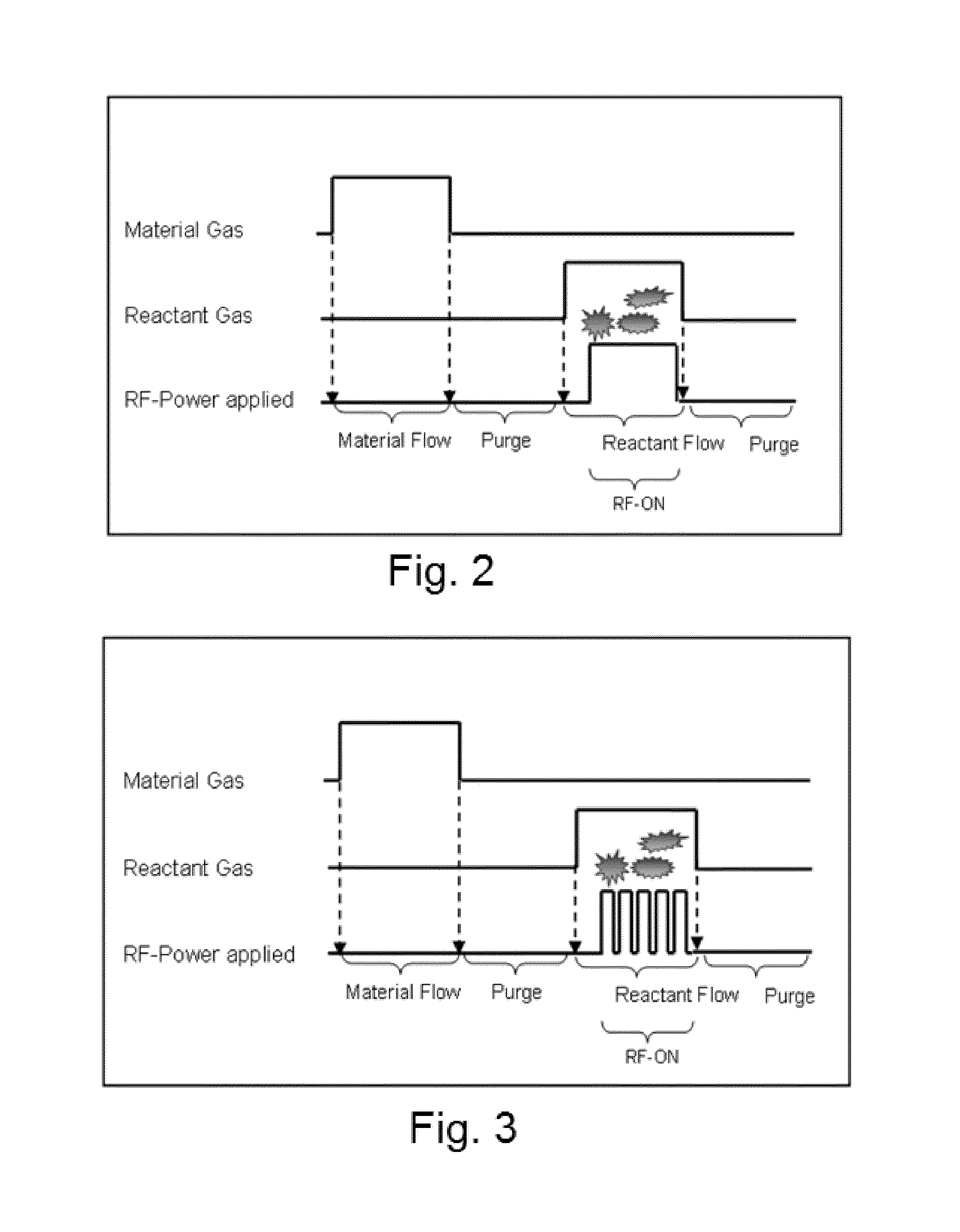Method of depositing film by atomic layer deposition with pulse-time-modulated plasma
a technology of pulse-time modulated plasma and atomic layer, which is applied in the direction of chemical vapor deposition coating, plasma technique, coating, etc., can solve the problems of affecting the the inability to fully complete the deposition process in a long time, and the inability to achieve the effect of reducing the surface potential and significantly improving the in-plane uniformity of the resultant film
- Summary
- Abstract
- Description
- Claims
- Application Information
AI Technical Summary
Benefits of technology
Problems solved by technology
Method used
Image
Examples
example 1
[0047]In this example, the apparatus shown in the schematic diagram of FIG. 1 was used to form a film. This apparatus comprises a reactor11 which can be retained in a vacuum state, susceptor 1 with heating mechanism used to hold a single wafer on top, shower head 2 which provides a mechanism for supplying gas, RF application mechanism 5 that generates a pulse-time-modulated plasma between the shower head and susceptor, precursor gas supply line 8 equipped with an open / close valve 3 connected to the shower head 2, reactant gas supply line 9 equipped with another open / close valve 4, exhaust line 10 used to exhaust the atmosphere inside the reactor 11, and vacuum pump 6 connected after the exhaust line via a pressure control valve 7, among others. Note that a purge gas line (not illustrated) is also connected to the shower head 2 just like the reactant gas supply line 9.
[0048]A Si wafer (300 mm in diameter) was heated to 70° C., and then N,N,N′,N′-tetraethylsilanediamine (SAM24) being ...
PUM
| Property | Measurement | Unit |
|---|---|---|
| pressure | aaaaa | aaaaa |
| pulse-time-modulation | aaaaa | aaaaa |
| thickness | aaaaa | aaaaa |
Abstract
Description
Claims
Application Information
 Login to View More
Login to View More - R&D
- Intellectual Property
- Life Sciences
- Materials
- Tech Scout
- Unparalleled Data Quality
- Higher Quality Content
- 60% Fewer Hallucinations
Browse by: Latest US Patents, China's latest patents, Technical Efficacy Thesaurus, Application Domain, Technology Topic, Popular Technical Reports.
© 2025 PatSnap. All rights reserved.Legal|Privacy policy|Modern Slavery Act Transparency Statement|Sitemap|About US| Contact US: help@patsnap.com



